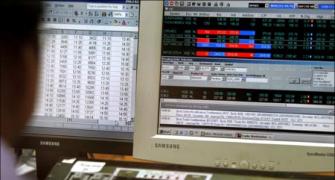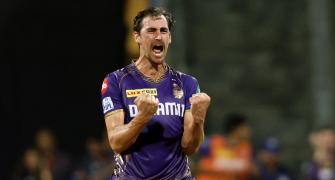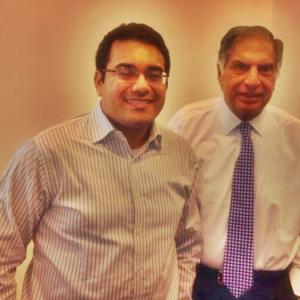
The early 1990s is a useful period to remember, particularly if you are a student of the media.
By then, the technology for compressing TV signals and beaming them out from satellites orbiting the earth to be received in millions of homes throughout the world had become widespread. CNN’s live coverage of the 1991 Gulf War helped. If wars could become television spectacles, what other part of our lives could not? MTV got the youth audiences in.
Technology visionaries as well as practical-minded financiers were ready for what was seen as the sure-shot next step. And this next step was to be – hold your breath – 'Interactive TV'.
Imagine a home with a TV set that carried 500 channels. Imagine a world where viewers would send text messages and the plot of an ongoing TV drama would be altered to fit user desires.
Or a world in which you could make phone calls and in which you could see on your TV set the person you are talking to. Or one in which you sit at home at leisure and phone in orders for items which were being demonstrated on TV shows.
Even college and school education would be revolutionised: why have a teacher address her lecture to a class of just a few dozen students — why not address a class of hundreds of thousands through satellite TV?
A wave of mergers and acquisitions led by the satellite TV industry would combine old-time terrestrial TV companies, phone companies and retail supermarkets under their wing.
Enterprising intellectual entrepreneurs decoded the theory behind all this: the theory of “Convergence”.
Convergence then became a hot topic in the policy field.
Bureaucrats in the Organisation for Economic Co-operation and Development, International Telecommunication Union and World Intellectual Property Organization, as well as in individual nation-States seized on this opportunity: innumerable commissions were set up to make sure that countries’ regulatory systems were not wanting in this grand movement of “convergence”.
Inside this “convergence” frame, those from the broadcast media side saw it as a “collision” between the worlds of telecommunications and broadcast media, and expressed fears that this collision would threaten the existence of the democratically-oriented culture of broadcast media.
Others, mainly investment banks and brokerage firms, saw it an opportunity to earn fees by using a frame that would promote their interests, the “privatisation” frame: if the new technologies that satellite TV represented had to deliver its promise, the laws that governed largely State-owned terrestrial TV networks would have to “reformed”, which is say, sold off to private interests or, at the very least, opened to private competition.
Convergence itself was a word used in two different senses. Some saw it as voice phone, radio and TV converging on one device (seen to be a TV at that time); others saw it as a convergence at the network level — ie, a common network carrying all of these different types of signals.
Since similar debates are raging right now about the future of media using the same rhetoric as the mid-1990s – with the world “Web” substituting “Interactive TV” – yesterday morning, in an attempt to refresh my memory of all the earlier debates I dusted off from my bookshelf a well-thumbed copy of a 1995 best-seller, Megamedia Shakeout: The Inside Story of the Leaders and the Losers in the Exploding Communications Industry.
The book, after an extensive tour of all the players and technologies fighting this battle in the mid-1990s, in its final chapter picks the likely winners and losers. Its winners list starts with AT&T (which exists at a fraction of its original size today) and has Disney and Hewlett Packard (about to be divided up and sold) leading the list. Its list of likely losers is led by Apple. Noticeably missing are the internet companies who rule the media roost today.
It is easy to look back at such forecasts about the evolution of an industry and smile indulgently, but you can do that only if you are an academic scholar.
What if you are an entrepreneur in that industry and must bet on one of the outcomes? What factors dictate which as an industry will evolve? Which of the many technologies and consumer offerings will emerge as winners?
Why, for example, did the textile Industrial Revolution of the 1780s happen in that far-off tiny island called England which grew no cotton nor produced any cotton textiles?
Why did it not start in India, which at that time produced practically all of the world’s cotton textiles?
One view, that of Robert Allen, a professor of economic history at Oxford University, is that, at that time, British wages were very high by international standards, and energy was very cheap -- it is this configuration that led British entrepreneurs to strive to invent technologies that substituted capital and energy for labour.
In no other country in the world of that time, least of all in India, was it profitable to deploy the spinning and weaving technology that defined the first Industrial Revolution.
In a similar fashion, will all that we dream about the spread of internet technology in India be determined more by factors like the relative cost of labour and materials than by regulatory policies of governments or actions of entrepreneurs?
Ajit Balakrishnan, the founder and CEO of Rediff.com, is the author of The Wave Rider, A Chronicle of the Information Age. You can mail him at ajitb@rediffmail.com










